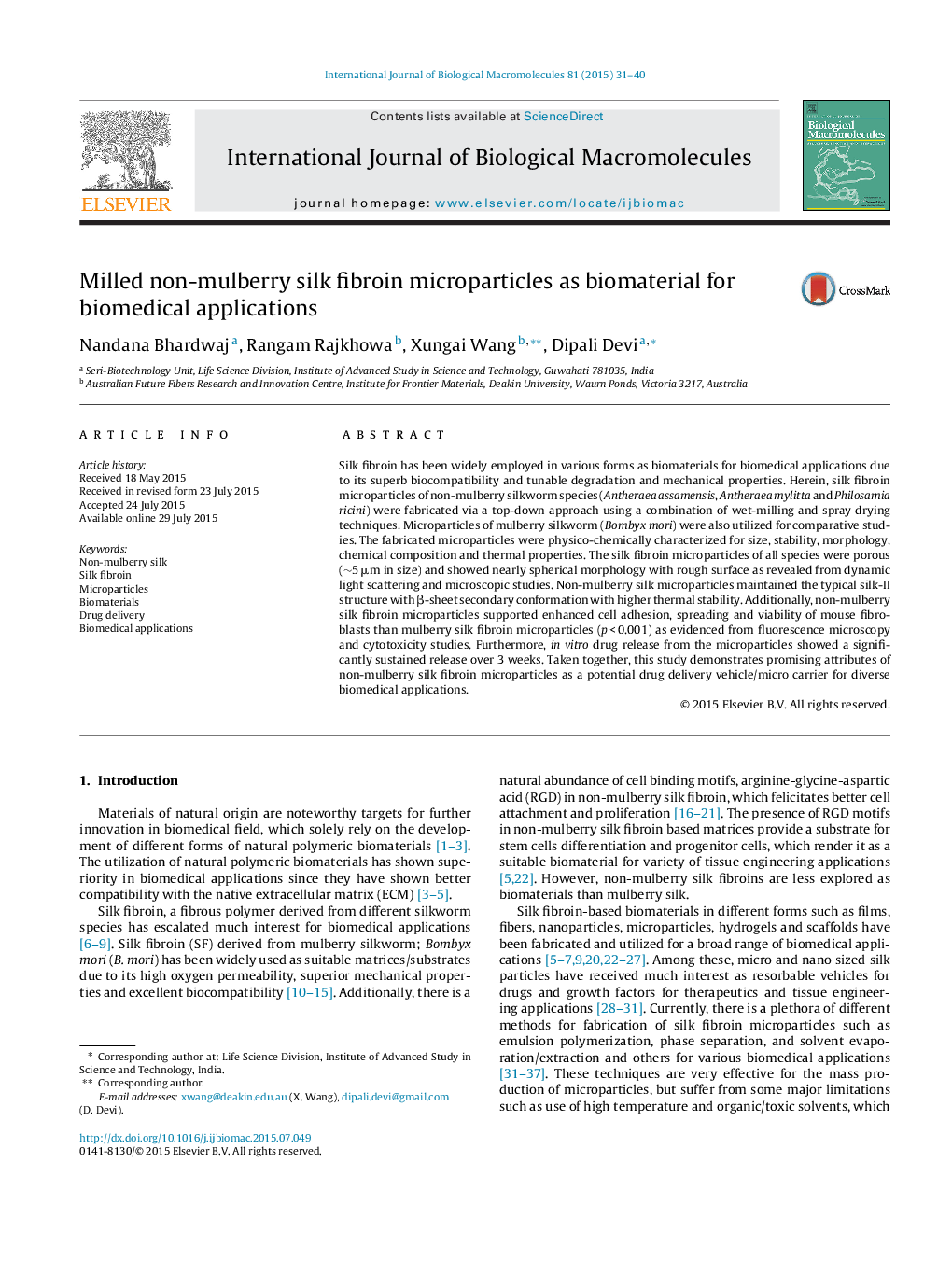| Article ID | Journal | Published Year | Pages | File Type |
|---|---|---|---|---|
| 8329957 | International Journal of Biological Macromolecules | 2015 | 10 Pages |
Abstract
Silk fibroin has been widely employed in various forms as biomaterials for biomedical applications due to its superb biocompatibility and tunable degradation and mechanical properties. Herein, silk fibroin microparticles of non-mulberry silkworm species (Antheraea assamensis, Antheraea mylitta and Philosamia ricini) were fabricated via a top-down approach using a combination of wet-milling and spray drying techniques. Microparticles of mulberry silkworm (Bombyx mori) were also utilized for comparative studies. The fabricated microparticles were physico-chemically characterized for size, stability, morphology, chemical composition and thermal properties. The silk fibroin microparticles of all species were porous (â¼5 μm in size) and showed nearly spherical morphology with rough surface as revealed from dynamic light scattering and microscopic studies. Non-mulberry silk microparticles maintained the typical silk-II structure with β-sheet secondary conformation with higher thermal stability. Additionally, non-mulberry silk fibroin microparticles supported enhanced cell adhesion, spreading and viability of mouse fibroblasts than mulberry silk fibroin microparticles (p < 0.001) as evidenced from fluorescence microscopy and cytotoxicity studies. Furthermore, in vitro drug release from the microparticles showed a significantly sustained release over 3 weeks. Taken together, this study demonstrates promising attributes of non-mulberry silk fibroin microparticles as a potential drug delivery vehicle/micro carrier for diverse biomedical applications.
Keywords
Related Topics
Life Sciences
Biochemistry, Genetics and Molecular Biology
Biochemistry
Authors
Nandana Bhardwaj, Rangam Rajkhowa, Xungai Wang, Dipali Devi,
